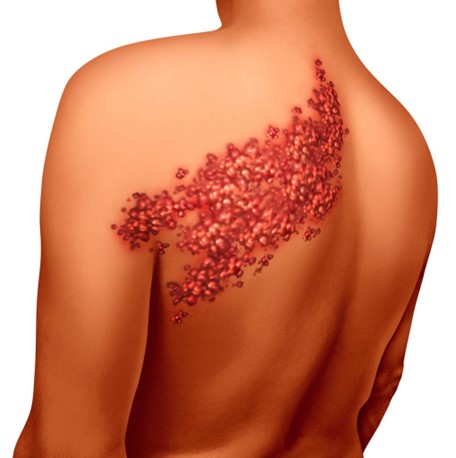A nurse is caring for a client who is postoperative following an open cholecystectomy. Which of the following assessment findings should the nurse report to the provider?
Report of shoulder pain
Thick, green-brown drainage on dressing
Incisional pain 5 out of 10 on a pain scale
Abdominal dressing dry and intact
The Correct Answer is B
This finding could indicate the presence of bile leakage, which can occur following a cholecystectomy. The provider should be notified immediately as the client may require further interventions. Incisional pain, shoulder pain, and a dry and intact abdominal dressing are expected findings in the postoperative period.
Choice A, reporting of shoulder pain, is not the correct answer because this is a common finding post-cholecystectomy, which is often due to the presence of carbon dioxide used during the surgical procedure.
Choice C, incisional pain 5 out of 10 on a pain scale, is not the correct answer because this level of pain is within the expected range for the postoperative period.
Choice D, abdominal dressing dry and intact, is not the correct answer because this is an expected finding in the postoperative period.
Nursing Test Bank
Naxlex Comprehensive Predictor Exams
Related Questions
Correct Answer is B
Explanation
The correct answer is choice B: Store opened insulin vials at room temperature for up to 4 weeks.
Choice B rationale: Opened insulin vials can be stored at room temperature (59°F to 86°F or 15°C to 30°C) for up to 4 weeks. After this period, the insulin may lose potency, and a new vial should be used.
Choice A rationale: Regular insulin is short-acting, and its peak effect occurs 2 to 3 hours after administration. Eating a snack 6 hours after insulin administration may not be necessary as the insulin would have already reached its peak effect, and blood glucose levels should be monitored accordingly.
Choice C rationale: Warming the insulin vial to dissolve crystals is not recommended. Insulin should be inspected before use, and if crystals or clumps are present, it should be discarded as this could indicate that the insulin has lost its effectiveness.
Choice D rationale: Unopened insulin vials should be stored in the refrigerator (36°F to 46°F or 2°C to 8°C) and should not be frozen. Freezing can cause insulin to lose potency or become ineffective. Once opened, insulin vials can be stored at room temperature for up to 4 weeks, as mentioned in choice B.
Correct Answer is B
Explanation

The correct answer is choice B, herpes zoster. A 65-year-old client should receive the herpes zoster vaccine, which is recommended for adults over the age of 60 years to prevent shingles. Choice A is incorrect because inactivated polio virus vaccine is recommended for travelers to areas where polio is endemic or epidemic, and for laboratory workers who handle specimens containing poliovirus. Choice C is incorrect because the human papillomavirus vaccine is recommended for females aged 9-26 years and males aged 9-21 years. Choice D is incorrect because the measles, mumps, and rubella vaccine is recommended for individuals born after 1957 who have not had the vaccine or the diseases.
Choice A: Inactivated polio virus vaccine is incorrect because it is recommended for travelers to areas where polio is endemic or epidemic, and for laboratory workers who handle specimens containing poliovirus.
Choice C: Human papillomavirus vaccine is incorrect because it is recommended for females aged 9-26 years and males aged 9-21 years.
Choice D: Measles, mumps, and rubella vaccine is incorrect because it is recommended for individuals born after 1957 who have not had the vaccine or the diseases.
Whether you are a student looking to ace your exams or a practicing nurse seeking to enhance your expertise , our nursing education contents will empower you with the confidence and competence to make a difference in the lives of patients and become a respected leader in the healthcare field.
Visit Naxlex, invest in your future and unlock endless possibilities with our unparalleled nursing education contents today
Report Wrong Answer on the Current Question
Do you disagree with the answer? If yes, what is your expected answer? Explain.
Kindly be descriptive with the issue you are facing.
